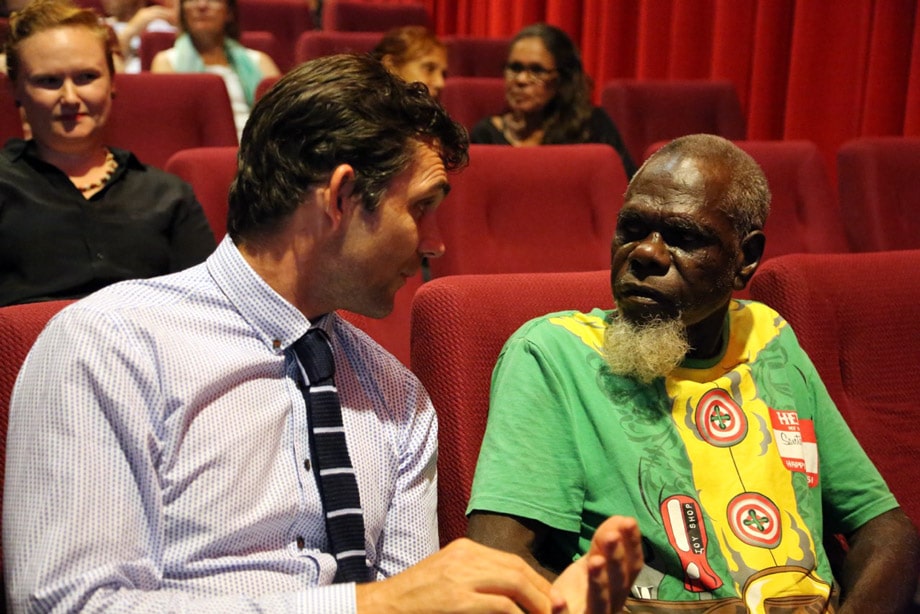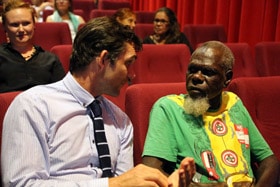NEWS

‘The Full Moon Dance’ – Guest Blog from Christian James
The Australian guideline for prevention, diagnosis and management of Acute Rheumatic Fever (ARF) and Rheumatic Heart Disease (2nd edition) defines secondary prevention of Rheumatic Fever as ‘the continuous administration of specific antibiotics to patients with a previous attack of Rheumatic Fever, or well documented Rheumatic Heart Disease (RHD)…
The effectiveness of secondary prophylaxis is impaired by factors affecting adherence to antibiotics regimes and by broad determinants that drive the ongoing incidence of ARF”. The barriers to effectiveness can be partly attributed to well document primordial factors such as overcrowded housing, poor access to health services, limited educational opportunities, and poor environmental conditions. Despite this, the success or failure of secondary prophylaxis can also be directly impacted by the health service provider and their relationships with the clients.
Full Moon Dance
In 2006 I was fortunate to be working in the Gibson Desert and I vividly remember my first experiences with Rheumatic Fever. It was the full moon dance as I used to call it. When I first arrived in the desert I was given a lengthy list, the list read ‘Full Moon monthly penicillin injections’. I knew from looking at a few of charts that these children had notes stating they had rheumatic fever; coming from a major tertiary hospital in the eastern states. I had to refer to the CARPA to actually see what Rheumatic Fever was, as I had never even seen or heard of the disease.
Fair enough before I knew it the full moon come by, I made sure I had enough penicillin in the pharmacy and prepared my injection station. I waited patiently in the clinic for the queue of children to swing by the clinic, but no one turned up. So I thought I would jump in the ambulance and track down their parents. The parents knew they were supposed to get an injection on the full moon, but when I asked them why they just shook their heads. In retrospect I didn’t know what Rheumatic Fever was and how important it was that the children received their injections on time, so how were the family supposed to know about the disease and importance of timely injections.
I asked them if could swing by the school and pick up a couple of the kids and if they would meet me down at the clinic; ‘Palya sister’ so I drove to the school, parked the ambulance and had a quick chat to the principal and went to the classroom. As soon as I rocked up two of the boys on the list jumped up, ran to the window, jumped out and ran into the desert. I looked at the principal and he said ‘well I am not going to chase them’. So I jumped out the window and ran into the desert after these boys. Finally, I caught up with them and brought them back to the clinic where the parents were waiting.
The next half hour I spent doing the full moon dance around the clinic trying to get the kids to sit still and relax so I could give them their penicillin injection. Looking back in hindsight this story highlighted many of the complexities in Rheumatic Fever management and the need for timely secondary prophylaxis including:
• Poor clinician knowledge
• Poor patient / family knowledge
• Lack of coordination in the health service
• Support for patient to improve self-management
However times have changed, there are now many great resources dedicated to building the partnership required to achieve management of Rheumatic Fever through secondary prophylaxis. Here are some examples;
• Improving Clinician knowledge – There is a huge expectation for remote area clinicians to be across all areas of health. A shared responsibility must be put upon the health service orientation and clinician orientation, but it is also the responsibility of the clinician to develop the skills to complete their job. To address this problem RHDAustralia has developed a suite of FREE online accredited training modules for use by Aboriginal Health Workers, Nurses, Allied Health and Doctors. http://www.rhdaustralia.org.au/e-learning-discussion-forum
• Improving patient and family knowledge – The children on secondary prophylaxis require 13 needles per year until the age of 21 or, for 10 years (whichever is longer). To achieve this it is critical to develop a great relationship with the patients and carers. The first step in developing this relationship is based upon cultural understanding and knowledge. It is important the clinician identifies with the family and prioritises To achieve this goal of 13 needles per year the patient, carers and support networks must understand the disease and why it is important to get the regular penicillin even if they don’t feel sick. RHDAustralia has developed a suite of tools to assist clinicians to work with the families to build a better understanding of rheumatic fever and importance of the needles http://www.rhdaustralia.org.au/resources . The newly released Take Heart toolkit is a great resource for clinicians to use as an aid to educate patients http://www.takeheart.tv/action-toolkit/
• Understanding the function of and utilising, the State and Territory control programs in the Northern Territory, Queensland, South Australia, Western Australia and New South Wales provide a wealth of knowledge, regional specific resources and specialist staff to monitor data, help with notifications and provide specialist knowledge http://www.rhdaustralia.org.au/programs.
• Both RHDAustralia and Take Heart have or are in the development of interactive secondary prophylaxis tools for patients and families.
Even with the development of RHDAustralia, State and Territory control programs and great initiatives from Take Heart, secondary prophylaxis levels whilst they are improving, are still insufficient to stop recurrences of Rheumatic Fever. As a clinician, I believe we should be striving toward all of our patients receiving 100% compliance – 13 injections per year. Even one day over 28 days and your patients are at risk of a recurrence of rheumatic fever.
Christian James
RHDAustralia, Program Manager
You can learn more about Secondary Prophylaxis in this short film
Join the subscriber list to receive the latest news and Take Heart short films as they are released.





















